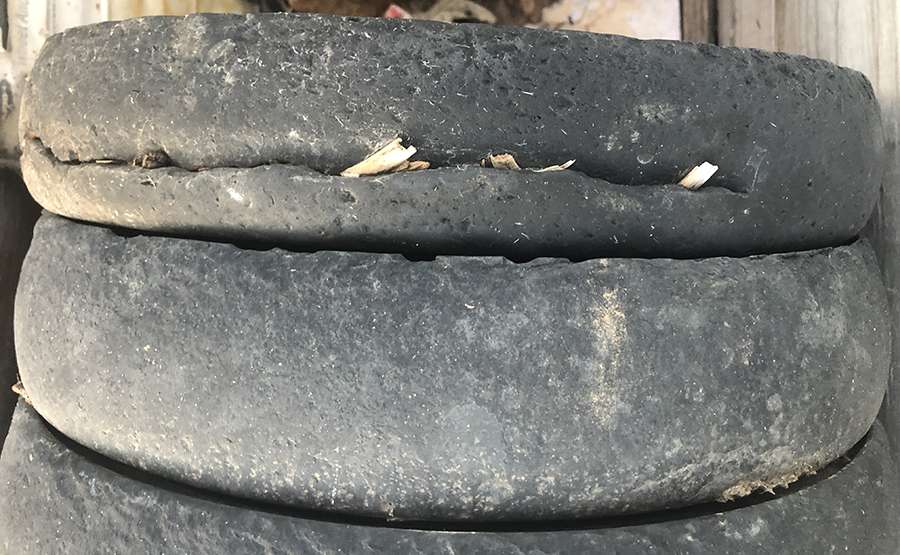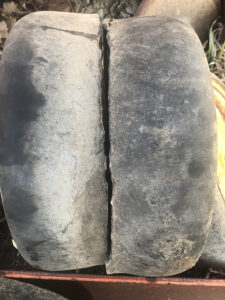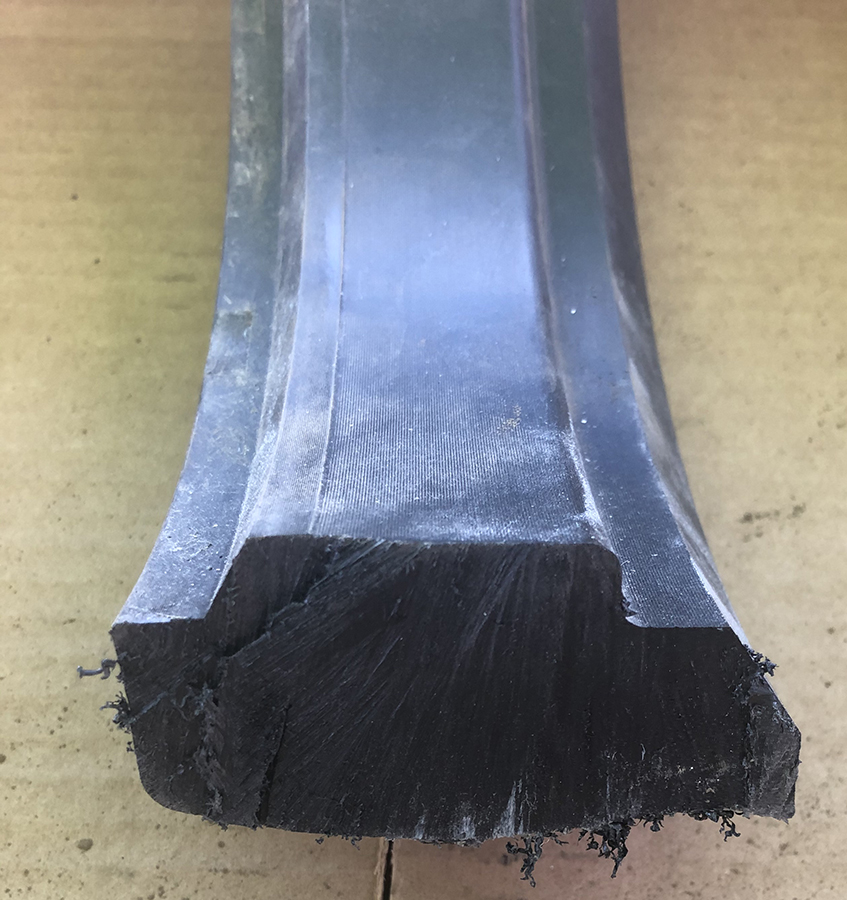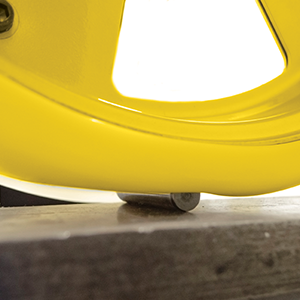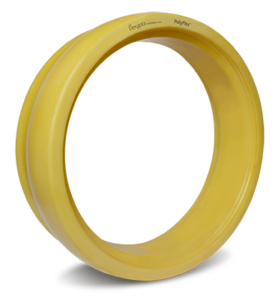Do I need a different gauge wheel tire and/or tire & rim on my planter or drill?
The first thing to evaluate is the condition of your tires. Does the tire still have a square lip that contacts the opener blade to make a seal to keep out dirt? What is the condition of the tire? Splits or checks in the material from stubble abrasion? Are chunks of tire material missing? Are you having trouble with mud buildup on the tire? These are reasons to replace gauge wheel tires, the most common being worn tires with no lip left on the inside of the tire.
Tires that have lost their lip can’t make a consistent seal against the blade. This allows dry soil to pass between the tire and blade, letting soil fall in, ahead of seed dropping into the furrow—not good. Dry soil below and around the seed will most likely cause issues with germination and uneven emergence.
The more common problem is allowing damp soil and mud to pass between the blade and the tire allowing mud to accumulate inside the rim – eventually building up to where the wheel may plug and stop turning. Many of us have been there and have spent frustrating downtime removing gauge wheels and digging out mud! Whether it be a 4 row or a 24 row, this is a pain.
Until recently, producers have been left with only 2 choices for replacement tires – rubber or polyurethane. Both have desirable characteristics. Both have some less than desirable characteristics. Let’s break these down.
Rubber Tires
Positives:
Pliable and shed mud better because they flex. Absorb small stones and root balls to an extent before lifting the row unit.
Negatives:
Short life in No-Till. Difficult to mount on rims; generally need to be pressed/forced on to rim with a press.
Polyurethane Tires (Needham & 4Ag)
Positives:
Long life in No-Till. Easy to mount on rims.
Negatives:
Mud buildup in wet conditions. Zero flex and rock hard—which may cause issues with consistent placement of seed due to raising the row unit when going over stones and root balls in firm, No-Till seed beds. Increasing down pressure may smooth out the ride by pressing the stones or root balls into the ground, but this will be at the expense of causing more compaction to the sidewall of the seed trench.
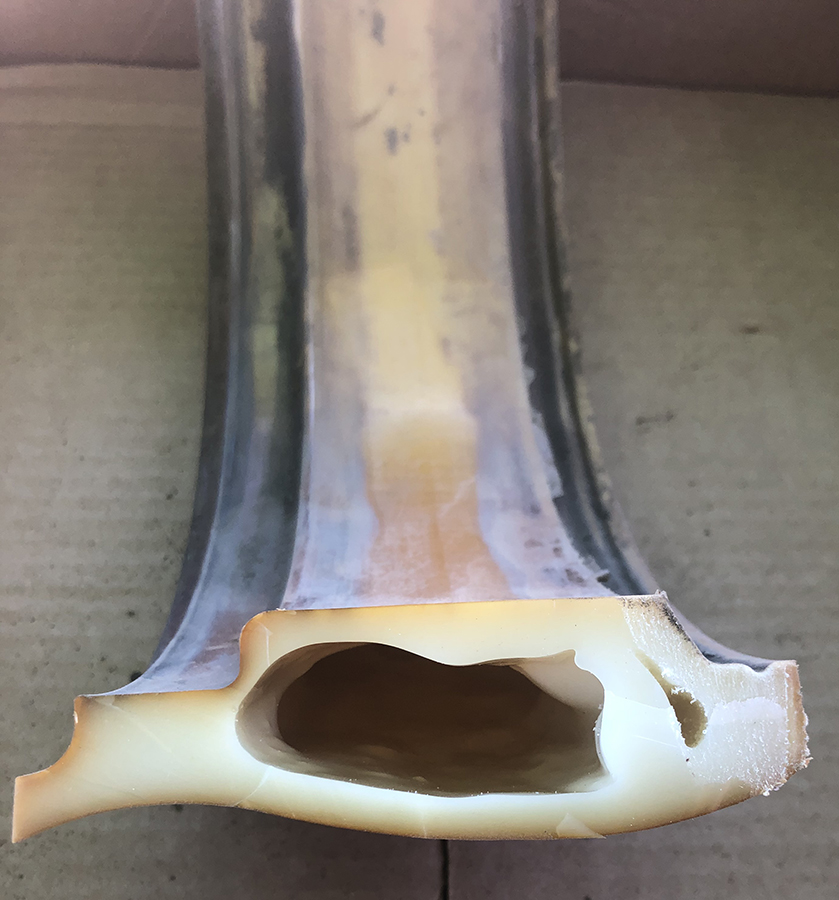
Today, you have a 3rd choice!
Exapta’s PolyFlex replacement tire combines the best of both Rubber and Polyurethane. PolyFlex has the pliability and cushion of rubber, as well as the ability to stand up to stubble burn in No-Till. The cushion comes from a combination of an air cavity inside the tire, coupled with a unique high-wear polyurethane material that can flex (unlike other poly tires that are hard as a rock). Because it can flex, PolyFlex sheds mud and rolls over small stones and root balls without raising the row unit, and it outlasts rubber in wear-life many times over.
The impressive wear-life will keep the lip of the tire from eroding or wearing away much longer than rubber. The late Matt Hagny, Exapta’s founder, was a stickler for detail and was insistent from the beginning stages of development of PolyFlex that it must have flex to do a proper job and to limit sidewall compaction as much as possible during planting. If flex wasn’t important, wouldn’t we still be using steel or wooden wheels on everything? Wear-life would be better! Seriously, if longevity of the tire was the only objective then there would be a multitude of other materials that would last longer. Flex is important! Flex is needed to keep the row unit running smooth without excessive down-pressure which can cause sidewall compaction. Sidewall compaction can cause “Tomahawk” root syndrome.
PolyFlex is the logical choice for replacement gauge wheel tires. Currently available in the 4.5″ standard width. PolyFlex is designed to fit most OEM, Carlisle and Mudsmith rims.
The Planter Pass Is Sacred.
Regardless of what style, type and brand of gauge wheel tire and rim you choose, it is imperative that the gauge wheel arm is tight and in good working condition. The gauge wheel can’t function correctly if the arm has excessive play. If it isn’t a snug fit, it cannot hold the gauge wheel in the proper position, against the blade, to make the needed seal. There are several excellent aftermarket kits available to correct this problem on planters and you always have the option to rebuild them with OEM parts.
A recent No-Till Farmer interview with Bill Lehmkuhl, a highly respected consultant from Ohio said it well:
“The secret to planting success boils down to not only equipment choices but measuring, verifying and doing the little things well. The sins of planting will haunt you all season long. The planter pass is sacred.”
Bill Lehmkuh

